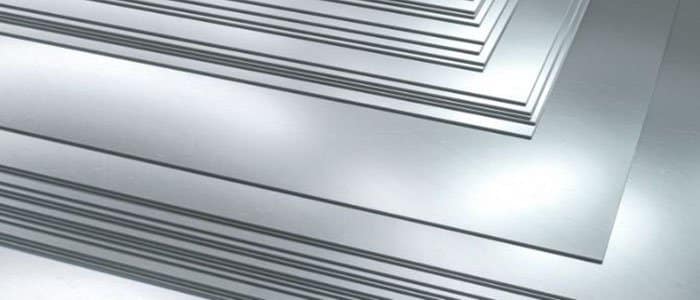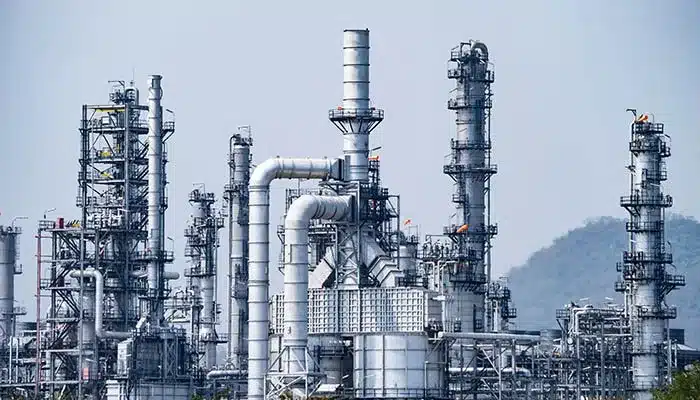In advanced engineering and industrial materials, it is always a challenge to find the right balance. This balance includes performance, durability, and cost. How can you get the exceptional corrosion resistance of titanium without the prohibitive expense? The answer lies in a remarkable innovation: Titanium Steel Clad Plate.
This comprehensive guide will walk you through everything you need to know about this composite material, from its fundamental structure to its critical applications in today’s most demanding environments.
Understanding the Basics
At its core, a titanium steel clad plate is a composite material that metallurgically bonds a layer of titanium (the cladding or clad layer) to a backing material, typically carbon steel or a low-alloy steel (the substrate or base layer).
Think of it as the best of both worlds. The steel substrate provides structural strength, rigidity, and cost-effectiveness, while the outer titanium layer offers a formidable shield against corrosion, erosion, and chemical attack. This strong combination forms a single, solid plate. It provides performance that neither material could achieve by itself.
Why Combine Titanium and Steel? The Core Benefits
The magic of the titanium-steel composite lies in its synergistic properties. By leveraging the strengths of both metals, industries can solve complex engineering problems efficiently. Here are the primary benefits:
- Exceptional Corrosion Resistance:Titanium is renowned for its ability to resist a wide range of corrosive environments, including chlorides (seawater), acids, and alkalis. The cladding provides a continuous, impermeable barrier, protecting the steel substrate from degradation.
- Significant Cost Savings:Solid titanium plates are incredibly expensive. By using a thin layer of titanium over a much cheaper steel base, you can achieve up to 80% cost reduction compared to using solid titanium, making it a highly economical choice.
- High Structural Strength:The steel core ensures the plate has the necessary tensile strength, toughness, and weldability required for structural applications like pressure vessels, storage tanks, and heat exchangers.
- Excellent Wear and Erosion Resistance:In applications involving abrasive materials or high-velocity fluids, the titanium surface provides superior resistance to wear and erosion, extending the service life of the equipment.
- Lightweight Solution:While heavier than pure titanium, a clad plate is often lighter than a solid steel plate that would require additional, bulky corrosion-resistant coatings or linings.
How is Titanium Steel Clad Plate Made? The Manufacturing Process
The quality and performance of a titanium steel clad plate depend heavily on the manufacturing process. The goal is to create a permanent, robust, and metallurgical bond between the two dissimilar metals. The most common methods include:
1. Explosion Cladding (Explosion Welding)
This widely used process involves placing the cladding plate (titanium) over the base plate (steel) with a small, controlled gap. Someone detonates a precisely calculated explosive charge on top of the titanium plate. The resulting high-energy collision forces the two metals together at incredible speeds, creating a wavy, interfacial bond that is stronger than the parent metals themselves. This process is highly effective for creating large-area plates.
2. Roll Bonding (Hot Roll Bonding)
In this method, a “sandwich” of titanium and steel plates is heated to a high temperature and then passed through a series of powerful rollers. The intense pressure and heat cause the metal surfaces to bond together. This process is excellent for producing long, continuous sheets of clad material.
3. Other Methods
Other techniques like diffusion bonding and weld overlaying also exist. Diffusion bonding uses high temperature and pressure over a longer period to allow atoms to diffuse across the interface. Weld overlaying involves melting titanium onto the steel surface, though it’s less common for creating full-size plates.
Key Applications: Where is Titanium Steel Clad Plate Used?
Thanks to its unique properties, titanium clad steel is indispensable in industries where failure is not an option. Key applications include:
- Chemical Processing Industry:Used for reactors, heat exchangers, and storage tanks handling aggressive chemicals like chlorides, acids, and organic compounds.
- Desalination & Power Plants:Ideal for components in multi-stage flash (MSF) and multi-effect distillation (MED) desalination plants, as well as condensers and cooling systems in power plants where seawater is used.
- Oil & Gas Sector:Employed in offshore platforms, subsea pipelines, and processing equipment that face harsh, corrosive marine environments.
- Marine Engineering:Used for ship hulls, propeller shafts, and other components exposed to saltwater.
- Pollution Control:Found in scrubbers and flue gas desulfurization (FGD) units in power plants and industrial facilities.
Conclusion: A Smart Material for a Demanding World
The titanium steel clad plate is more than just a material; it’s a strategic engineering solution. It masterfully combines the unparalleled corrosion resistance of titanium with the structural integrity and affordability of steel. For any industry battling the destructive forces of corrosion, this composite material offers a durable, reliable, and cost-effective path to longer-lasting equipment and safer operations.
As a professional metal supplier, Daxun Alloy provides customers with high-quality titanium steel clad plates. Contact our experts today to select the metal material that best suits your needs.




